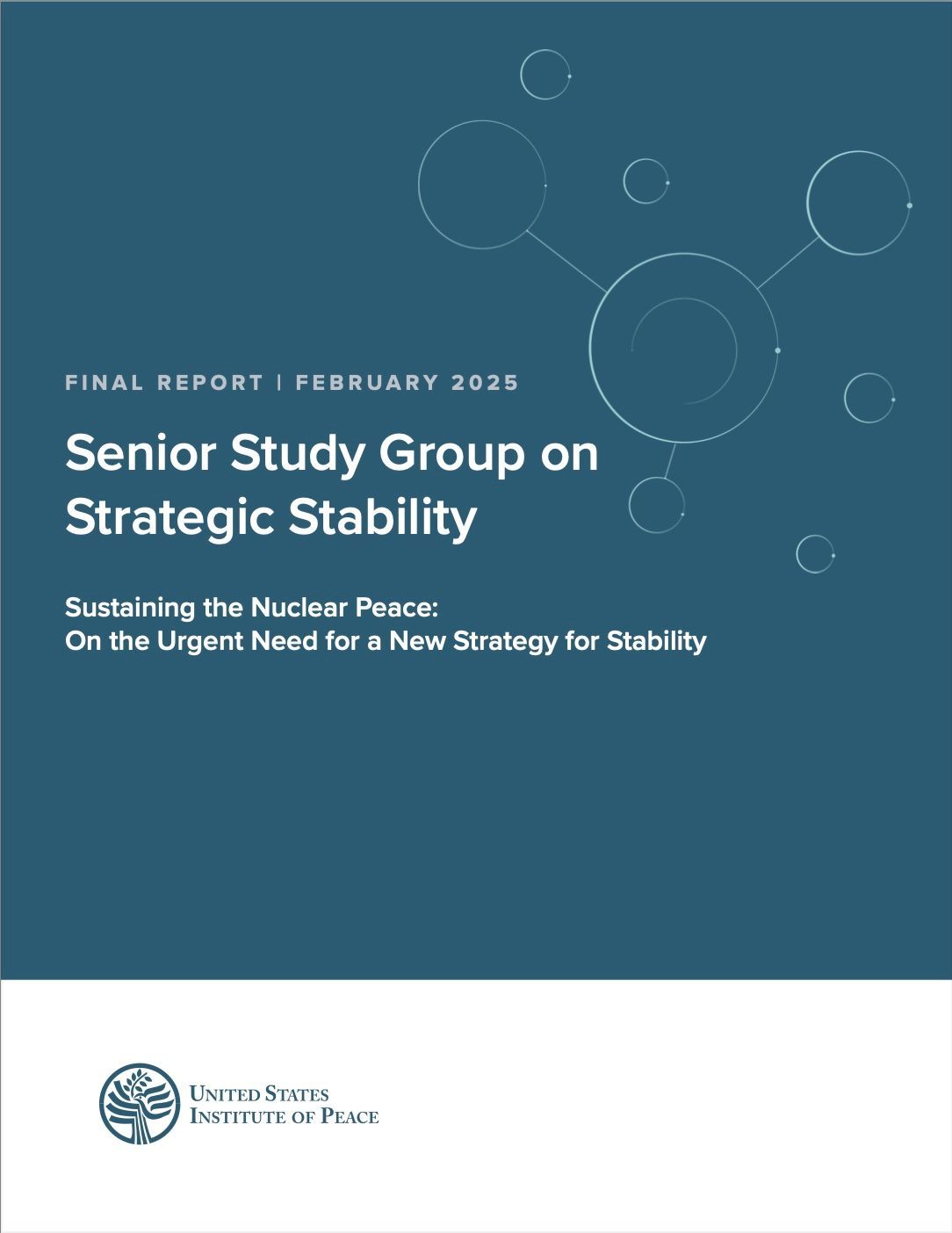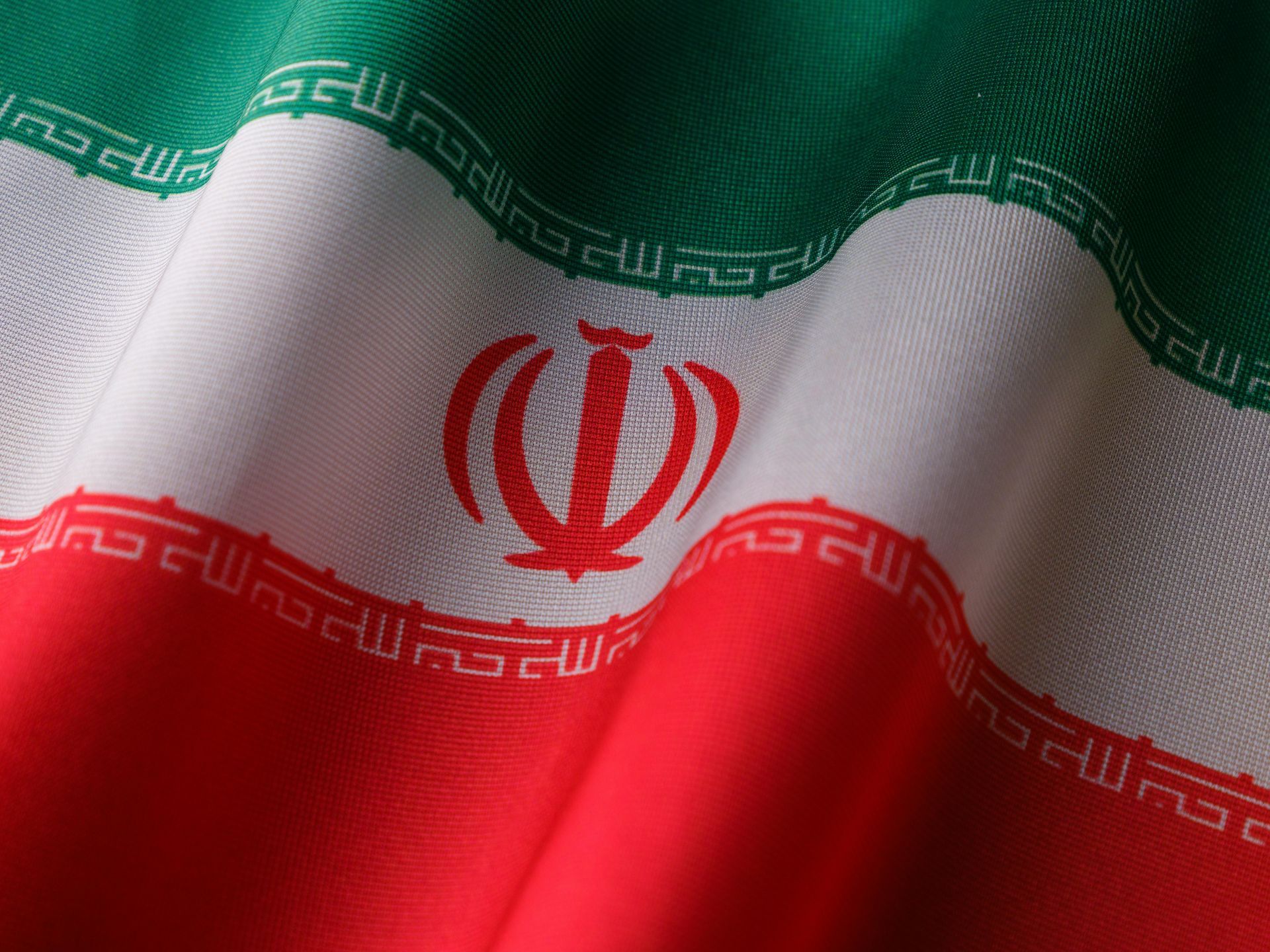Why China Technology-Transfer Threats Matter
Note:
Below are the remarks Assistant Secretary Ford delivered at the U.S. Naval Academy on October 24, 2018. These remarks may also be found on the website of the U.S. State Department's Bureau of International Security and Nonproliferation.
Good evening, and thank you for inviting me. I’ve been out of uniform for a while – having gotten out of the Reserves as an O-4 nearly 10 years ago now – but this former naval intelligence officer is especially pleased to see all of you midshipmen in the audience tonight, serving our great nation here at the U.S. Naval Academy.
I’d like to speak a bit tonight on a theme that has received increasing attention in the State Department. As I outlined in remarks to the Foreign Policy Association in New York last summer, after too long a period in which the United States did not take great-power competition seriously enough – while the revisionist powers of China and Russia most certainly did – the United States is finally now intently focused upon this challenge. The new U.S. National Security Strategy calls out “the contest for power” as a “central continuity in history,” and warns of challengers that “are actively competing against the United States and our allies and partners.” In our new National Defense Strategy, we highlight that “[t]he central challenge to U.S. prosperity and security” today is “the reemergence of long-term, strategic competition,” and that “[b]oth revisionist powers and rogue regimes are competing [with the United States] across all dimensions of power.”
In the Bureau of International Security and Nonproliferation (ISN) at State, we are working hard to improve the United States’ response to the threats identified in those pivotal documents. We do this first and foremost by helping keep dangerous capabilities out of the hands of rogue regimes and terrorists, through preventing, detecting, and rolling back the proliferation of weapons of mass destruction, delivery systems, and advanced conventional weapons. That is our core mission.
As I emphasized to a Senate Committee in August, however, my bureau also contributes to the development and implementation of U.S. competitive strategy against the “near-peer” state adversaries of China and Russia. One way we do this is through implementation of sanctions to reduce the revenue streams the Kremlin gets from foreign arms sales and to undermine the destabilizing relationships that Russia builds through such sales. But another way we support U.S. competitive strategy is by implementing and improving controls on transfers of technology, to keep flows of sensitive technology and material from helping build up the military capabilities that near-peer adversaries feel themselves to need in order to advance their interests as they perceive them.
In this latter respect, for example, we review U.S. export licenses for nonproliferation concerns, we chair the four key interagency interdiction groups devoted to impeding progress in foreign threat programs and disrupting proliferation networks worldwide, and we coordinate U.S. relations with multilateral export control regimes. We also implement capacity-building programs with foreign partner states, and we undertake nonstop global counterproliferation diplomacy through which we build support for and share “best practices” in sanctions enforcement and interdiction.
As part of this effort, ISN is placing increasing emphasis upon raising awareness about, and putting up barriers to, the proliferation of sensitive technologies to the People’s Republic of China – technologies which Beijing has been using to build up its military capabilities in support of its ambitious “China Dream” of “national rejuvenation” to regain China’s position as a world leader in a range of fields, including military might. Beginning last July at the Los Alamos National Laboratory, we have been publicly drawing attention to the degree to which both licit and illicit transfers have been used to augment Chinese military power, as authorities in Beijing have – in a process known in Chinese strategic writings as “Military-Civilian Fusion” (MCF), and now personally overseen by Xi Jinping himself – systematically worked to routinize military application of know-how acquired abroad.
In several public addresses now, I have drawn attention to these China technology-transfer problems, and to the challenge presented by MCF to traditional ways of approaching export control and technology-transfer policy. What I have had less chance to do so far, however, is to draw a clearer picture of exactly why this all matters so very much. But it does matter – and I’m glad for the chance to shed a bit more light tonight on what China aims to do with all the sensitive technologies it has been acquiring for so long, by means both fair and foul, from the United States and other developed countries.
The arc of this story begins, for many Chinese Communist Party (CCP) officials, with a potent national narrative that revolves around the righting of historical wrongs. When Chinese officials speak of the “China Dream” – a phrase particularly associated with Xi Jinping, but which draws upon longstanding themes in literature and culture – they envision the achievement of a China that has “returned” to a degree of global power and status that it believes it historically held, and that it has longed to re-establish ever since Western colonial powers bested the Qing Dynasty with embarrassing ease in the military conflicts of the 1840s and later in the 19th century.
To right the historical wrong of China’s loss of historical status as the “Middle Kingdom” at the perceived center of human civilization, CCP officials have declared that a critical component of the “China Dream” is the “Strong Military Dream.” This “Strong Military Dream” seeks to bring about China’s development of a world-class military that can ensure China’s dominant position in Asia, give it a global power footprint, and allow Beijing to ensure conditions favorable to the country’s continued economic climb. Chinese strategists explain that under the “Strong Military Dream,” China aims to have the military capabilities of a global power.
Indeed, with remarkable candor, Chinese leaders of no lesser a stature than Xi Jinping himself have made clear that the Communist Chinese Party-State now sees itself as the paladin of a distinct ideology — a socio-political “operating system,” if you will, characterized by market-oriented state capitalism steered by an authoritarian Leninist party organization — that is in a long-term struggle with democratic capitalism as the dominant model for the 21st-Century. At the 19th Party Congress, Xi Jinping famously declared that China’s emergence as a great power demonstrates a new path and governance model for modernization. What is less well known, however, is the degree to which he envisions this China model as a model of military power and dominance as well. Nevertheless, at the Third Plenum of the 12th National People’s Congress in 2015, Xi Jinping was quite clear about this. There, he described the “new round of scientific and technological industry revolution and the new revolution in military affairs” as being not merely intertwined with, but as being the same as “the struggle for national security and development dominance” in “the competition between development concepts.”
Open talk of a so-called “China model” of development that began to be much more prevalent in Chinese writings after the 2008 financial crash has thus now explicitly blossomed under Xi Jinping into a full-blown concept of competition between systems to decide the geopolitical future of the world. I guess you could call Xi’s approach “Cold War with Chinese characteristics.”
So China’s ambitions are huge. Chinese strategic writings make clear that the objective of the CCP’s strategy is not merely to acquire power and influence for China on the world stage, but in fact to displace U.S. power and influence so as to reclaim the central geopolitical status and role of which China believes it was robbed by Western imperialism.
And that’s where the imperative of acquiring foreign technology comes into the picture, for many Chinese strategists have viewed the collapse of the once-mighty Qing Dynasty as being a result of China having fallen behind in technological innovation and military capabilities. Even the Qing itself had tried to fix this problem, but these efforts were unavailing, and China struggled unhappily along with a reputation for technological backwardness for generations.
The acquisition of foreign technology and its adaptation to Chinese needs has been a constant ambition throughout most of this long story, but it is really only with the country’s so-called “opening” to the world in the 1980s that Beijing’s push for foreign technology as a stepping stone to military advancement really began to take off. This agenda received an additional push in the mid-1990s, when Beijing found itself unable to respond when the United States sailed two aircraft carrier battle groups off Taiwan in 1996, to protect that island from Chinese efforts to intimidate it with ballistic missile launches after Taiwan announced in 1995 that it would hold its first free presidential elections. The high-technology prowess of U.S. forces against Soviet-modeled armies of Saddam Hussein in 1991, and the willingness of the United States and NATO to fight local wars against vicious, human rights-abusing dictators during this period added to Beijing’s concerns.
Since the late 1990s, a focus on science and technology (S&T) development has been central to Chinese military strategy – which has stressed the imperative of developing military capabilities to deter U.S. intervention in regional wars China might find itself fighting, raise the potential costs for Washington in any such conflict, preclude the U.S. Navy and other American forces from operating near China’s border, and, if necessary, defeat the United States. To this end, China engaged in a massive S&T development effort, focused upon getting the high-technology weapons that it was assumed would shape the nature of warfare in the 21st Century.
By 2009, this effort within the S&T sector had evolved into an even more ambitious, whole-of-nation, national-level strategy to “fuse” the Chinese military and civilian industrial complexes, from top to bottom. This is “Military-Civilian Fusion.” Driving this enormous effort is an acute Chinese perception that their country’s 19th Century downfall resulted from falling behind along the technology and doctrinal curves that defined the “revolutions in military affairs” (RMA) that dominated and shaped warfare across the 20th century. These past RMAs included the mechanization of warfare which integrated aviation, armor, and mobile communication capabilities in World War II, as well as what Chinese writings would eventually call the “informationization” of warfare following from the wars of the 1990s – characterized by the total integration of the battle space through modern communications and computing capabilities, and even an ability to win wars without putting any “boots on the ground” at all, as was demonstrated by NATO in the Kosovo campaign.
China is determined not to be left behind in the next RMA, which Chinese officials believe to be already underway. According to Xi Jinping, a new scientific and technological industrial revolution is now in progress, and the new Revolution in Military Affairs will be intertwined with this S&T revolution. Specifically, it is felt that this next RMA will derive from the incorporation of artificial intelligence (AI) into military systems and doctrines of all sorts, with the nature of future warfare being shaped – and, implicitly, the outcome of future conflicts being decided – on the basis of the balance of what Chinese authors term “intelligent military technology.”
As set forth in plans for deep partnerships between universities, private companies, and the Chinese armed forces, military applications of AI are expected to change the nature of warfare from today’s “informationized” ways of fighting to more profoundly “intelligentized” methods in the future. Following Xi’s October 19th Party Congress Speech, the Chinese military began to conceptualize the kind of war that will flow from the military applications of artificial intelligence and have called it “Intelligent Warfare.” Much of the technology and warfighting concepts resident within Intelligent Warfare are not original, but instead, mirror the technologies the Chinese military believes to be part of the United States Third Offset, and the related emerging U.S. approach to war being conceptualized in China as “Multi-Domain Warfare.” No matter what it’s called, Chinese theorists expect that future patterns of geopolitical dominance and submission will depend on which nation is able to take the lead in this new form of warfare.
If China succeeds in mastering the technologies of Intelligence Warfare, as it clearly hopes to do, merely “catching up” to foreign military power would become a thing of the past, and Chinese military efforts would no longer need to focus – as they have since the mid-1990s – upon “asymmetric” tools designed to offset overwhelming U.S. conventional military advantages with what is described as “assassin’s mace” weaponry. Simply put, China aims to lead the next RMA, and to reap the geopolitical benefits accordingly, by exploiting cutting-edge civilian technology – much as industrial production and steam power allowed for Europe when the Qing met its match in the 19th Century, as mechanization did for the great powers of the mid- 20th Century, and as communications technology facilitated the net-centric warfighting exhibited by the United States after the end of the Cold War. This is the CCP’s blueprint for China’s global “return” to military preeminence.
And that’s why the strategy of “Military-Civilian Fusion” is so important to Chinese strategy – and why, of course, we need to wake up to the implications of MCF and Chinese technology-transfer efforts that target our own technological strengths. Beijing’s efforts are being undertaken not simply for the sake of profit and economic competitiveness, but also in order to equip China to lead the world in the next RMA, so that it will finally have the power needed to achieve the so-called “China Dream” of global power and status.
But I don’t want to single out Artificial Intelligence alone, for Chinese sources see this push as involving a range of related disciplines. China has identified many sectors for MCF development, including nuclear technology, aerospace, aviation, semiconductors, cloud computing, robotics, and big data processing technology – among others – that it thinks will be critical to the new RMA. Some components of this effort, such as semiconductors, cloud computing, and big data, will be needed to develop the AI that Chinese officials believe will shape and define the future battlespace. Fields such as nuclear, aerospace, aviation and shipbuilding technologies are sectors in which AI is expected to be applied in order to provide the actual combat capabilities China aims to field in the future. One way or the other, however, this aspect of Chinese strategy keeps coming back to one thing: seeking technology in order to build military power with strategic impact.
As merely one example, the Ministry of Information and Industry Technology – a lead agency in implementing MCF – has declared that control of the oceans has become critical to Chinese sovereignty and security, and that the adoption of a “Military-Civilian Fusion” approach in this area can help China “break[] the strategic dilemma” it faces in the maritime domain. In effect, therefore, MCF is seen as the key to equipping China to be able to stymie and if necessary defeat the U.S. Navy and use its own forces to secure global access to the resources it wants for its thirsty economy.
And lest you think that this is just about technology for weapons systems themselves, Chinese writings explain that advances in nuclear reactor technology will permit the deployment of floating nuclear power plants in the South China Sea. They describe plans for small modular reactors that could power the military bases or vessels needed to exclude foreign powers and thereby consolidate China’s seizure of that area from other regional claimants, maintaining it as a Chinese maritime enclave carved out by force from international waters. More broadly, Chinese writings also explain that technologies made available to the military through the MCF strategy will drive the advances in naval nuclear propulsion ( e.g. , submarines powered by a nuclear reactor), unmanned aerial vehicles, swarming drones, and unmanned ships and submersibles that Beijing feels it needs in order to have a “blue water” navy capable of operating not just in China’s neighborhood but indeed around the globe.
As Chinese writings explain, the nuclear industry is a “typical military civilian fusion” sector because of the technological commonalities between civilian and naval nuclear power applications. For this reason, China’s largest nuclear technology company – China National Nuclear Corporation (CNNC) – signed a cooperative agreement last summer with the Chinese Navy specifically in order jointly to advance military-civilian fusion. If the rest of the world needed any additional warning that, irrespective of any end-use promises that may have been given, foreign technological cooperation with Chinese companies such as CNNC is de facto cooperation with the People’s Liberation Army Navy (PLAN) and its nuclear propulsion programs for such things as ballistic missile submarines, South China Sea maritime bases, and even nuclear powered unmanned submarines, this is that warning.
None of this, of course, is to guarantee that China will succeed in leveraging all the technologies it acquires into a new “revolution in military affairs” that will permit Beijing to win for itself, against us , the type of geopolitically game-changing technological first-mover advantages that the Royal Navy enjoyed against the Qing in the Opium Wars. For one thing, there might not turn out to be so much of an RMA after all. For another, if there is an RMA, China might not succeed in seizing these commanding heights for itself. I, for one, am confident that our model of an open and democratic society, bolstered by a free market and educational and research institutions operating free of political interference – with the government playing an appropriately modest role – will help us continue our long tradition of innovation and creativity in both civilian and military science and technology, and can allow us to keep ahead of China’s MCF efforts in the years to come.
What is clear, however, is that China is today engaged in a state-led, industrial-policy-based, whole-of-nation competitive strategy that revolves in crucial ways around the acquisition of sensitive foreign technologies by any, and every, possible means. This effort takes advantage of open economies to attempt to ensure China’s ability to rely on itself as a source of critical technologies. Ironically, this goal of self-reliance runs precisely counter to the globalization narrative China’s senior most leaders claim to support. And all of these dynamics in turn raise serious questions about China’s strategic intentions – especially in light of China’s own strategic writings about how it is acquiring and diverting such technologies to military applications in support of a geopolitical agenda that challenges U.S. power and influence in the Indo-Pacific region.
Please don’t misunderstand. This is not an argument for a crude embargo. As our National Security Strategy states: We should remember that “[c]ompetition does not always mean hostility,” nor does it have to. Our goal is not to “contain” China or thwart its development, and we do not want another “cold war.” As the President has made clear, we want a constructive relationship with Beijing where our prosperity and security grow together, not apart. Given the important linkages between U.S. high technology sectors and our own defense capabilities and industrial base, and the economic and strategic advantages being the world’s leading open economy, it is also in the U.S. national security interest for our technology exports to be strong and competitive.
But we do need to understand China’s technology strategy, and its military and potential strategic implications. I hope I have made the point that if we – and by that I mean not just the United States but any foreign possessor of sensitive technology – are to continue engagement with the Chinese military-technological complex in its state of “fusion” with China’s civilian sector, this must be done only with due care, and in full awareness of the ambition of China’s MCF strategy and its geopolitical goals.
This is, for instance, what the United States has just announced that it is doing with regard to civil-nuclear cooperation. We are not stopping all nuclear technology cooperation with Beijing, but we are ending cooperation on advanced projects such as small modular reactors or other advanced designs that China could use — and clearly plans to use — not merely for civilian power generation but to facilitate advances in ballistic missile submarine propulsion, or to power military outposts seized by force in the South China Sea. Where once we cooperated all too uncritically with Beijing in civil nuclear power applications, we are now doing so much more cautiously, and will deny licenses for anything that China could use for military purposes under its MCF strategy.
Others should follow us in such long-overdue policy adjustments. As I have now repeatedly pointed out publicly, if any sensitive technology is accessible to China, and officials there believe it can be of use to the country’s military and national security complex as Beijing prepares itself to challenge the United States for global leadership, it’s a pretty safe bet that it will be used for those purposes. And now that I have tried to shed some more light on the real geopolitical stakes in this game – and the starkness of the technology-facilitated military ambitions that underlie the MCF approach – I hope you’ll agree that it is exceedingly important that we find the right degree of care and caution in any such engagements.
At the same time, however, I remain optimistic as I look out across this room of midshipmen and faculty. After all, this Academy ranks among our nation’s top science, technology, engineering, and mathematics schools – making it an important part of how our nation will meet these challenges in the years ahead. So in your naval careers, or eventually as civilians, I encourage all of you to dedicate yourselves to playing a part in maintaining our nation’s technological edge, in keeping our country’s strategies and policies focused upon understanding and meeting national security threats, and in securing for your children and their children the many blessings that we ourselves have all enjoyed from the freedom and prosperity so long secured by United States power, commitment, and engagement in the world.
Thank you for listening. And … Go Navy!
-- Christopher Ford







